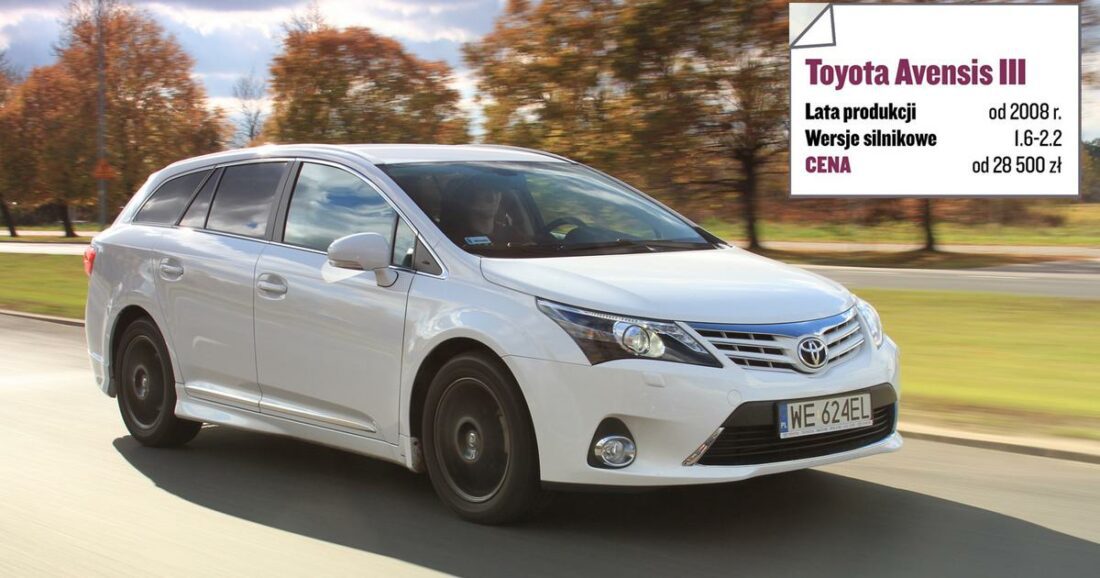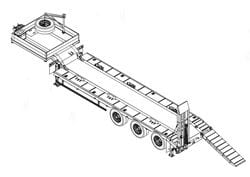
Toyota Avensis 3
- Video
It was exactly the same (also) for the Avensis, which (with the exception of the two mentioned features) did not stand out in either of the two previous generations. In particular, Europeans are supposedly sensitive to appearance and to “quality” perceived by touch. At Toyota, they are slowly (and this also applies if we add the previous Carino E) to other performance that we value in the old continent.
This time, in addition to the third generation Avensis project, they made extensive use of their European engineers: at the first stage, they worked together with their Japanese counterparts in Japan, then transferred the whole process to Europe and completed it; from design and technology to preparation for production.
And this Avensis is supposedly new from head to toe. The wheelbase has remained unchanged, as has the height, only the width and front overhang have increased by millimeters (both times by exactly 50). But the platform is completely new, and the chassis is completely new, although even this in words (and partly in the picture) corresponds to the technology of the previous generation.
Toyota is aiming for the new Avensis to move from mid-range to upper mid-range, and with the most powerful and best-equipped versions, it is also expected to reach the luxury segment of the same size class. This is why the Avensis places a lot of emphasis on innovation, driving pleasure and form. Exterior and interior.
While not a design revolution, this Avensis looks more confident, be it a sedan or a wagon (van). Several sharp edges, high thighs and a domed roof with a sporty touch immediately catch the eye and give the car a rather recognizable look. The new interior is slightly less expressive, but there are sensors of the Optitron type and soft-touch materials that give a high quality feeling.
The interior can be black or two-tone taupe, the middle of the dashboard can be finished in different colors and surface finishes, and even if someone doesn't like the look, they will likely praise the design, workmanship and materials. In addition, with similar external dimensions, they found a little more space inside, kept the van's trunk easy to increase (and at the same time increased the volume a little) and gave the driver a slightly lower seat with a slightly larger upright steering wheel.
The engines for the Avensis come from well-known machines, but they, especially the petrol ones, have gone through an extensive overhaul process. What Toyota describes as Toyota Optimal Drive is all of the known and proven engine technology of the previous generation, thoroughly updated. In the case of gasoline engines, another technical improvement has been added to the “double VVT-i” system (camshaft angle adaptability) - Valvematic (frame).
For turbo diesels, a number of components have been improved (piezo injectors, fill pressure of 2.000 bar, combustion chamber shape and conversion of sliding parts to a less viscous engine oil) to improve performance and reduce carbon dioxide consumption and emissions. In doing so, they achieved, above all, a higher torque at low engine speeds, around 1.400. Among the most powerful engines are the electric turbocharger control and the latest generation spark plugs.
From now on, all Avensis have a standard six-speed manual transmission, as well as two types of automatic transmissions. In the case of petrol engines of 1, 8 and 2 liters, they rely on the proven infinite gear ratio (CVT) transmission, which can also mimic a seven-speed (automatic, of course, but with manual gear shifting). ), and they are so convinced that they predict Toyota's long-term future (especially with the gasoline engine), although they are also openly considering the possibility of a dual-clutch transmission.
The turbo diesel (medium power only) has a variant of the classic automatic (6) transmission with manual gear shifting, a sports program, with clutch lock from second gear and with record downshift times in combination with diesel engines.
The chassis follows the principle we know from the second generation Avensis and the important changes are a wider track, bigger wheels, improved steering (front axle) and better torsional rigidity (rear axle). The stabilizers are set up differently and the electric power steering provides a very good steering feel. Added an active reset system, which is especially noticeable at lower speeds.
The chassis has also gotten quieter, and for a more comfortable ride (when it comes to noise and vibration) soundproofing has been improved (all windows, additional protection for the engine compartment and body), as the Avensis also wants to compete with more upmarket cars in its class of cars.
When it comes to passenger safety, Toyota expects five stars in the tougher Euro NCAP test (next year), and the Avensis comes standard with seven airbags, ABS and VSC + stabilization (both latest generations) and active head restraints. A driver warning system (fast flashing brake lights) is also standard, and bi-xenon turn-tracking headlights are available as an option.
Comfort equipment is also at a satisfactory level - as standard there is already (manual) air conditioning, electrically adjustable windshields, an audio system with a CD player (also mp3) and steering wheel controls, as well as an electric parking brake.
The Sol package is expected to be the most popular in Europe (second from bottom to top, followed by Executive, third in a row of four), and as for forecasts, they will probably sell a little more Avensis gasoline, almost three. quarter manual transmission and about semi-sedans. And because they are on solid ground, they expect a lot from selling the Avensis to older couples (nearly half) and of course companies - mainly because of the excellent reliability and (but certainly not only) low maintenance costs.
Despite all the technology and other advantages of Avensis, its appearance is likely - and this time for the first time noticeably - to attract new customers. This is the type of acquisition that is ultimately reflected in market shares and (financial) performance. In these difficult times, this will certainly be extremely important.
Pre-collision system - good and bad sides
The collision protection system with a sensor anticipates a collision and intervenes accordingly: activates the seat belt pretensioners and (without the driver's command to the brake pedal) brakes sharply to reduce the consequences of a collision. The Avensis also includes Adaptive Cruise Control (ACC), Lane Departure Warning (LDW) and Lane Keeping Assist (LKA).
The good side is that it protects passengers better, but the bad side is that the system is only available with version 2.2 D-4D (150) A / T Premium (the most expensive equipment package) - for an additional fee. At Toyota, compatibility with only one version is justified by the fact that the system requires an automatic transmission and is very expensive.
Valvematic - for gasoline engines
It is a system that adjusts the opening height of the suction valves according to current requirements. The system is technically relatively simple and compact and partially replaces the throttle valve during operation. Since the valves do not always open at the same rate, the energy required to lift the valves is reduced (then) and pumping losses are reduced due to the mode of operation. Valvematic improves fuel efficiency, reduces emissions, increases engine power and improves engine responsiveness.
This gives the 1-liter engine 6 percent more power (compared to the same size engine in the previous generation), 20 Newton meters of torque and 10 percent less carbon dioxide emissions. For a 12-liter engine, these values are (in the same order) 1 percent, 8 Newton meters, and 14 percent (or 10 with an automatic transmission), and for a two-liter engine (where the performance increase is minimal) three percent, zero newton- meters and 10 percent or 16 in combination with an automatic transmission.
Vinko Kernc, photo: Tovarna
